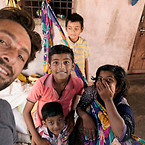
A UNIVERSITY COURSE CALLED URBAN LITERACY AND VISUAL LITERACY ENABLES YOU TO DISCOVER THE DISTINCTIVE ASPECTS, BOTH UNIQUE AND SHARED, OF EVERY CITY YOU VISIT, TO MAKE COMPARISONS BETWEEN CITIES, AND TO APPRECIATE EACH CITY’S CONTRIBUTION TO WORLD CULTURE
Understanding cities, in other words, urban literacy, has two aspects: the theoretical and the practical. Discussed at the theoretical level are the development and history of cities and the characteristics that make them cities, as well as the reasons for migration to cities and the story of modern urbanization. An attempt is made to understand the artistic-cultural heritage and activities peculiar to cities, together with their actors. On the practical side - the field study in other words - our “Exploring Istanbul” course has four components, which we explore on various walking tours of the city. First, we take a look at the city’s skyline or overall appearance. In Istanbul this could be done by taking a Bosphorus cruise, or viewing the city from Büyükçamlıca hill or from the Galata Tower. In Berlin it could be done from the TV Tower, in Paris from the Eiffel Tower, and in New York from the Empire State Building. For old walled cities like Ankara, Alanya or, Şanlıurfa it could be done from the castle. Such a view, which enables you to perceive the city’s pattern of settlement and hierarchy of buildings and structures, reveals the city’s identity, in other words that society’s concept of the city - what that city places priority on, the things to which it gives value, as well as the elements it tries not to show, the things it shunts aside and excludes. This enables us to “read”, through the urban space, the world view of a society as well as its particular characteristics, such as rights, justice, morals, discipline, memory, human relations and perception of nature. Second, we explore the city’s architecture, in other words its choice of construction materials such as wood, concrete and steel, as well as the style and function of buildings and the ornamentation on their facades. Our itinerary for Istanbul is the Zeyrek - Balat area. Here, you will find centuries of highly diverse building materials and see the architectural styles and functional differentiation of the residential and religious spaces. These actually show us the city’s historical, multicultural and economic strata, as well as providing information about variety and quality in architecture and the city’s cultural composition and diversity. Third, we examine the city’s written culture, in other words, inscriptions on gravestones and historic monuments, memoirs, signs on apartment buildings and places of business, street signs and wall plaques. Our itinerary runs from Üsküdar Square to the Bülbülderesi Cemetery and from there to the area of the Mihrimah, Rum Mehmet Pasha, Ayazma and Aziz Mahmud Hüdayi Mosques. There are numerous manifestations of written culture here, such as inscriptions on religious buildings, birdhouses and sundial drawings on walls, as well as tombstone epitaphs. People and places that left a mark on the neighborhood and are part of its memory have in a sense spoken to those around them and conveyed their message. As we load meaning onto those buildings, spaces and people through our own worlds and concepts, we are at the same time attempting to correctly place them in their own world by looking at messages left by people from the past. Lastly, we observe the different lifestyles of cities, especially of metropolises like Istanbul where different ways of life co-exist. Take a walk down İstiklal Street to Tarlabaşı, Kasımpaşa and Galata, and notice how people and families of different socio-economic status and of diverse religions and cultures co-exist here in time and space. Cities, happily, are home to a variety of social strata and ways of life, and recognizing that and determining their overlap and separation in space provides us with important clues about their inhabitants. In sum, these are the clues. Use them to turn your outings into a new venture of discovery of the quintessential aspects, both unique and shared, of every city you visit. Urban literacy and the concept and practice of visual literacy are taught at Istanbul Şehir University in a course titled “Exploring Istanbul”.
Emre Caylak
Original
Emre Caylak

